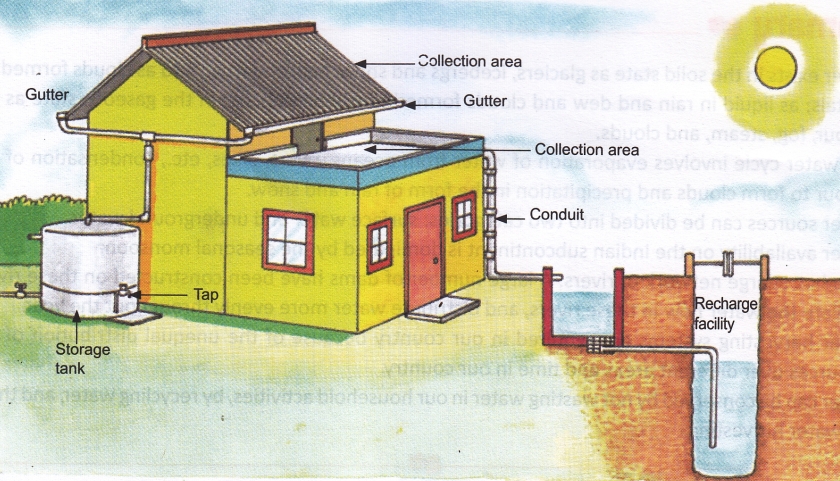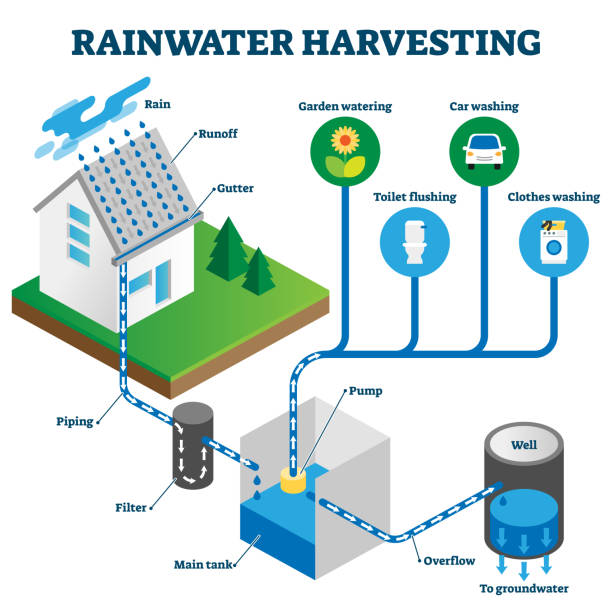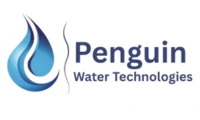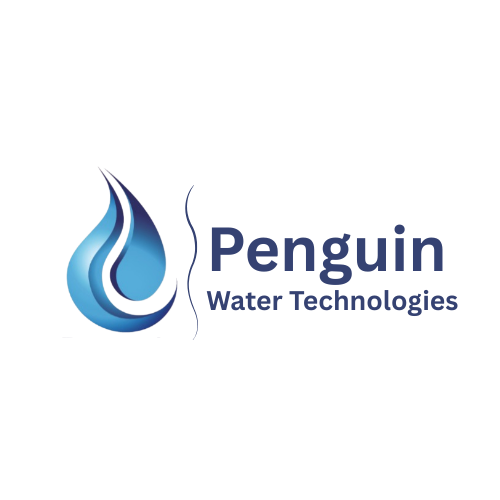
Rain Water Harvesting System RWHS
Smart Water Conservation for a Sustainable Future
Our Rain Water Harvesting System RWHS is a reliable and eco-friendly solution designed to collect, store, and reuse rainwater for various residential, commercial, and industrial applications. As freshwater resources become increasingly scarce, RWHS offers an effective way to reduce dependency on municipal water supply and preserve groundwater reserves.

Key Features:
- Efficient Water Collection: Designed to capture rainwater from rooftops, paved areas, and open spaces.
- Filtration & Purification: Multi-stage filters ensure that harvested rainwater is free from debris, dirt, and contaminants.
- Modular Storage Solutions: Flexible storage options in underground or above-ground tanks based on your space and usage requirements.
- Low Maintenance: Simple, durable system components that require minimal upkeep.
Scalable Design: Suitable for small homes, large housing societies, schools, office buildings, factories, and more.
Benefits of Rain Water Harvesting System RWHS:
- 💧 Reduces Water Bills: Utilize harvested water for gardening, flushing, washing, and even potable use with proper treatment.
- 🌱 Conserves Groundwater: Recharges the groundwater table and reduces the risk of water scarcity.
- 🏠 Improves Property Value: Green infrastructure like RWHS enhances the sustainability profile of residential and commercial properties.
- 🛠️ Easy Installation: Quick and hassle-free setup by our expert team.
- 🌍 Eco-Friendly: Contributes to environmental conservation and helps combat the effects of climate change.
Applications:
- Residential Buildings & Apartments
- Educational Institutions
- Industrial Facilities
- Office Complexes
- Government Buildings
- Hospitals & Hotels
Why Choose Our Rain Water Harvesting System RWHS?
- Customized system design based on rainfall data and site conditions
- High-quality components for long-lasting performance
- Complete assistance, ranging from design and advice to setup and upkeep
- Affordable solutions with excellent ROI
What is a Rain Water Harvesting System (RWHS)?
A Rain Water Harvesting System RWHS is an eco-friendly solution designed to collect and store rainwater for future use. Instead of allowing rainwater to run off and go to waste, RWHS captures it from rooftops, paved areas, or open grounds, then filters and stores it for various applications like irrigation, flushing, washing, and even drinking—after proper treatment.
Rainwater collection is a straightforward but effective way to preserve groundwater supplies, lessen dependency on municipal supplies, and conserve water. It is especially important in regions facing water scarcity, irregular rainfall, or increasing urban development.
A typical RWHS consists of:
- Catchment Area (e.g., roof or terrace)
- Gutters and Downpipes to channel rainwater
- First Flush System to divert initial dirty water
- Filtration Units to remove debris and contaminants
- Storage Tanks or Recharge Pits to hold the clean water
Whether used for domestic, commercial, or industrial purposes, rain water harvesting supports sustainable water management and helps build climate-resilient infrastructure. See More
How Rain Water Harvesting System RWHS Works: Step-by-Step Guide
Rain Water Harvesting System RWHS is a simple yet highly effective process that captures, filters, and stores rainwater for later use. Here’s a step-by-step guide on how a typical Rain Water Harvesting System (RWHS) works:
Step 1: Collection from Catchment Area
Rainwater is first collected from a catchment surface, usually a rooftop, paved area, or open ground. The surface should be clean and sloped to allow smooth water flow into the collection system.
Step 2: Conveyance through Gutters and Downpipes
The collected rainwater flows through a network of gutters, downpipes, and channels that direct it toward the storage or filtration area. These should be designed to handle heavy rainfall and prevent overflow or leakage.
Step 3: First Flush Diverter
The initial rain often carries dust, leaves, and other debris. A first flush system is used to divert this initial flow away from the storage tank to ensure that only clean water enters the system.
Step 4: Filtration
Before reaching the storage tank, the rainwater passes through multi-layer filtration units. These may include sand, gravel, activated carbon, or mesh filters to remove dirt, organic matter, and pollutants.
Step 5: Storage or Groundwater Recharge
The filtered water is then:
Stored in above-ground or underground tanks for later use, or
Directed into recharge pits or bore wells to replenish the underground water table.
Step 6: Usage
The harvested water can be used for a variety of non-potable and potable purposes, including:
Flushing toilets
Gardening and irrigation
Washing vehicles
Cooling systems in industries
Drinking and cooking (after proper purification) See More
Frequently Asked Questions About Rainwater Harvesting
Yes. Rainwater is naturally pure but may collect dust or contaminants from surfaces. With proper filtration and, if needed, purification, it can be used safely for various purposes, including gardening, flushing, and even drinking.
Absolutely. RWHS can be retrofitted into existing homes, apartments, and commercial buildings with minor plumbing adjustments.
This depends on your catchment area (e.g., roof size), local rainfall, and system efficiency. On average, a 1,000 sq. ft. roof can harvest about 22,000 liters of water annually with 1,000 mm rainfall.
In many regions, especially urban areas, local authorities encourage RWHS and may even provide incentives. It’s wise to verify your local building codes or regulations, nevertheless.
System size, component count, and installation complexity all affect costs. Basic home systems can start from a few thousand rupees, while larger systems for apartments or industries may cost more.
Basic maintenance like cleaning filters, pipes, and tanks, should be done before and during the rainy season. It is advised to perform a thorough system check at least once every year.
Yes, if it is properly filtered and treated with UV or RO purification systems. For non-potable uses like washing or irrigation, basic filtration is usually sufficient.
The system will not collect new water during dry spells, but stored water in tanks can be used during this time. It works best when combined with other water-saving methods.
Yes. By relying on your own collected rainwater, you reduce dependence on municipal or tanker water, especially in areas with supply issues.
In many Indian states and cities, rainwater harvesting is mandatory for new constructions and large buildings to help address water scarcity and recharge groundwater.

